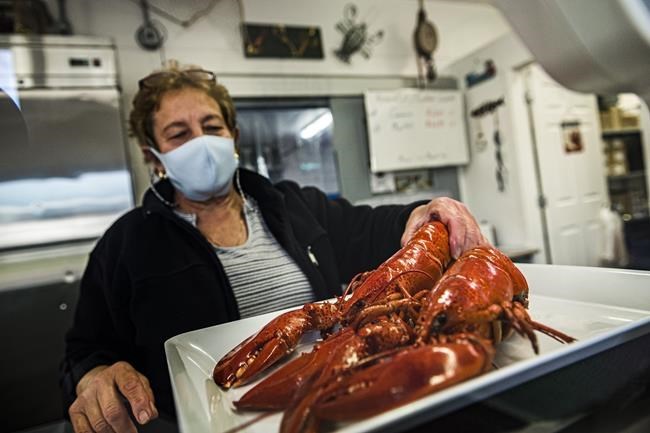HALIFAX — Lobster populations around the Maritimes remain in good shape, though climate change may be to blame for a recent downward trend, the federal Fisheries Department says.
Adam Cook, a research scientist with the department based in Halifax, said Tuesday that populations started rising around 2010 and peaked a few years ago amid strong demand for the crustaceans. As the populations rose, so did lobster landings, making for a lucrative industry.
Even though most populations appear to be shrinking in recent years, Cook said the numbers remain strong and sustainable when compared to levels recorded before 2010.
The latest numbers are contained in a series of stock status reports released in late March.
"We still think there's enough lobster for there to be a sustainable lobster population," Cook said in an interview. "Over the last number of years, the conditions have been favourable to lobster ... We're still in what we consider the healthy zone." One of the key factors contributing to the healthy numbers has been a lack of predators, the scientist said.
As a result, the department does not have any conservation concerns about lobster. That is welcome news to an industry that exported $3.26 billion worth of product in 2021, beating the previous record of $2.59 billion set in 2019.
Outside the Maritimes, lobster are fished in Newfoundland and parts of Quebec. But the three Maritime provinces dominate the Canadian industry.
Almost all coastal communities in the Maritimes are involved in the inshore lobster fishery, which now has 3,000 licence-holders employing about 7,500 fishers.
In Lobster Fishing Area 34, which stretches from southwestern Nova Scotia to the Bay of Fundy, lobster landings account for 20 per cent of Canadian totals, making it the country's largest lobster fishery. The annual haul there averaged 21,844 tonnes over the past five years.
But the past six seasons have seen total landings decreasing from the record high in 2016.
There are a number of restrictions on the fishery that help with conservation, including a limited number of licences and traps, strictly enforced fishing seasons and restrictions on catching small lobsters and egg-bearing females.
Still, the latest numbers show populations sliding downward in most areas across the Maritimes, except along Nova Scotia's eastern shore and Cape Breton.
"You can't always be setting new highs," Cook said. "At some point populations become self-regulating and you'll see declines, even in an undisturbed, natural population."
Cook said the warming of the Atlantic Ocean caused by climate change could be to blame, but more research needs to be done.
"There are ecosystem changes going on," he said. "We have heard reports about the Gulf of Maine warming considerably faster than a lot of other places. These are things we're thinking about. But from a biological perspective, we still feel there is ample lobster to be contributing to the population."
Unlike some ocean-dwelling creatures, lobsters are fairly resilient when it comes to fluctuations in water temperature, but even they have a limit. Still, it remains unclear if that limit has been reached in some areas.
"These are major research questions we are working on now," Cook said.
This report by The Canadian Press was first published May 23, 2023.
Michael MacDonald, The Canadian Press



